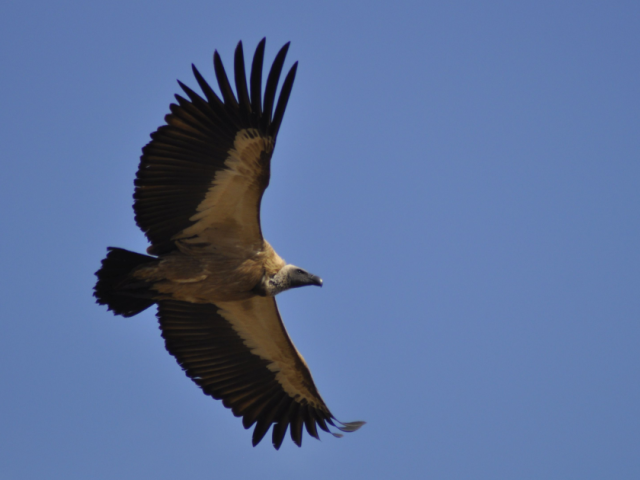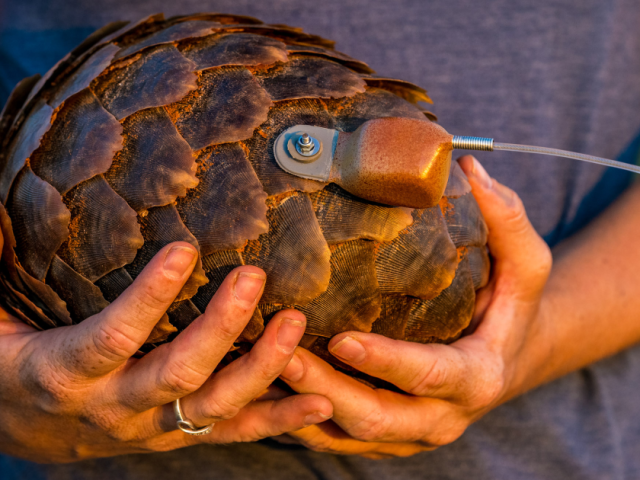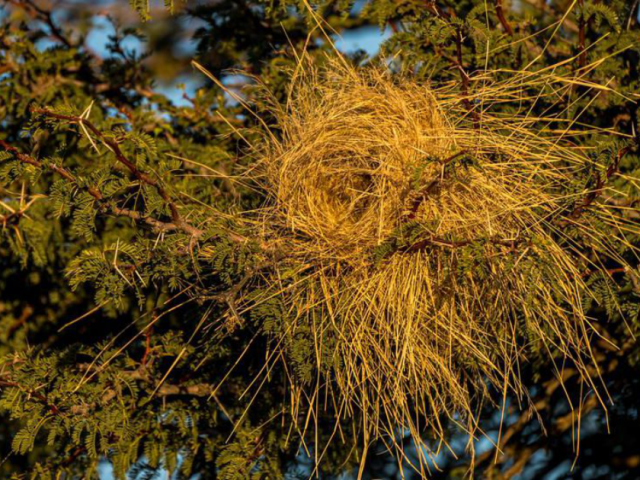The small Edith’s Checkerspot butterfly is less fragile than it looks
How does “Edith” do evolution? Yves Vanderhaeghen speaks to butterfly behavioural ecologist Professor Michael C. Singer about his pet topic, the Edith’s Checkerspot butterfly, and how it is coping with climate change.
Butterflies are delicate and vulnerable animals, as immortalised in Gary Larsen’s cynical cartoon of conversation between entomologists holding aloft a fresh captive: “What a magnificent specimen – symbol of beauty, innocence and fragile life. Pass me the jar of ether.” However, in the rugged terrain of the Sierra Nevada of California, where the air is thin and the ground unforgiving, a small butterfly has been proving less fragile and vulnerable than it looks, surviving in the face of dramatic changes in its environment that humans have unwittingly wrought.
This unlikely champion of resilience is an unglamorous, unadventurous butterfly that normally travels less than a few hundred metres in its two-week life. It is Edith’s Checkerspot, Euphydryas editha, named after an otherwise-forgotten “Edith” by the 19th century French lepidopterist Jean Baptiste Boisduval. Observing the story of this butterfly’s survival in a changing world has been a researcher of insect behaviour, Mike Singer, and a researcher of climate-change impacts on nature, Camille Parmesan. Together they have spent five decades studying the checkerspot’s interactions with its host plants and its responses to environmental change.
Singer will be presenting the history of how “Edith” does evolution at the 13th Oppenheimer Research Conference in Johannesburg from October 9-11, in a talk titled “Evolutionary responses to global changes: insights from 50-year studies of Edith’s checkerspot butterfly”.
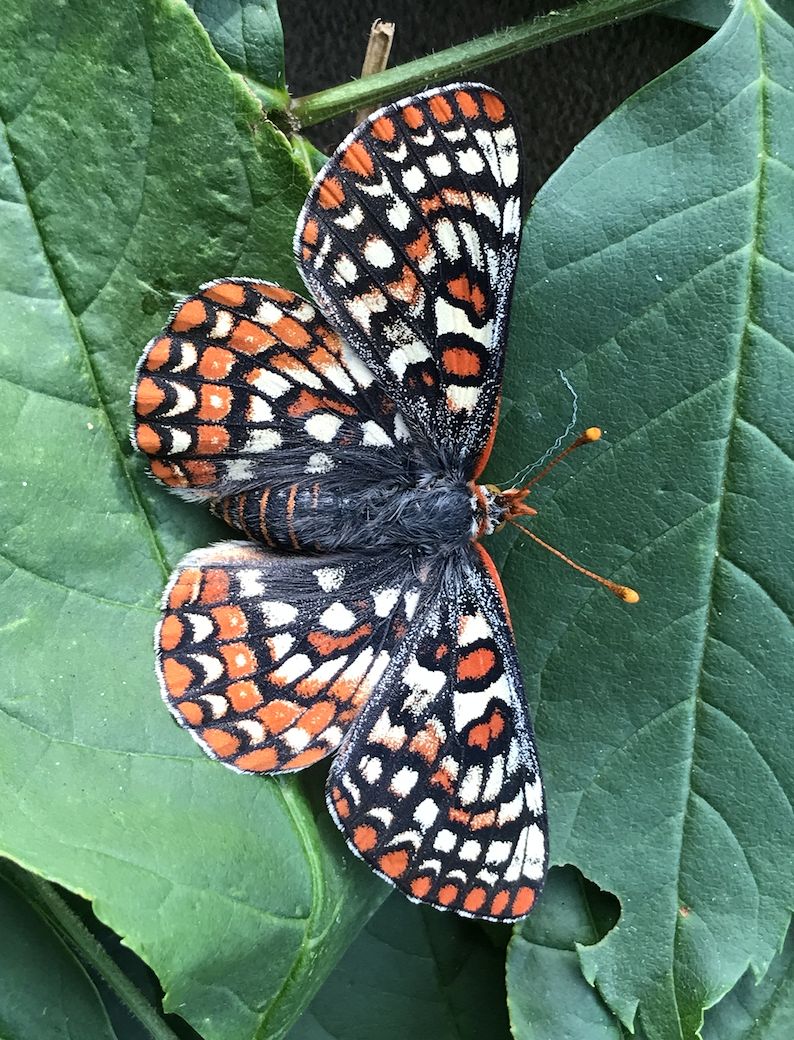
Many butterfly species range widely across the landscape and need to be adapted in a general sense, to be able to operate in the diversity of habitats that they encounter. By contrast, because most Edith’s Checkerspots never leave the forest or meadow where they were born, their populations can evolve very specific adaptations to each local habitat. Singer and Parmesan’s studies of the butterfly have shown how “its propensity for detailed local adaptation has allowed it to be an evolutionary athlete in responding to environmental change. It has repeatedly indulged in rapid evolution in response to different forms of human activities, including logging and introduction of exotic plants.”
Dancing on the knife-edge between survival and oblivion, the future of Edith’s Checkerspots in the Western Sierra Nevada of California begins with a simple choice: to lay their precious eggs on either the unglamourously-named lousewort (Pedicularis semibarbata) or the tiny, ephemeral blue-eyed Mary (Collinsia torreyi), two very different plants presenting vastly different challenges for the insect and different interactions with the warming climate. Many or even most caterpillars hatching from eggs laid on Collinsia starve because their host dies before they have had time to store up enough reserves to survive the long dry summer. The degree of synchrony between the lives of insect and plant, and hence the risk of starvation, is climate-sensitive and expected to change with current warming.
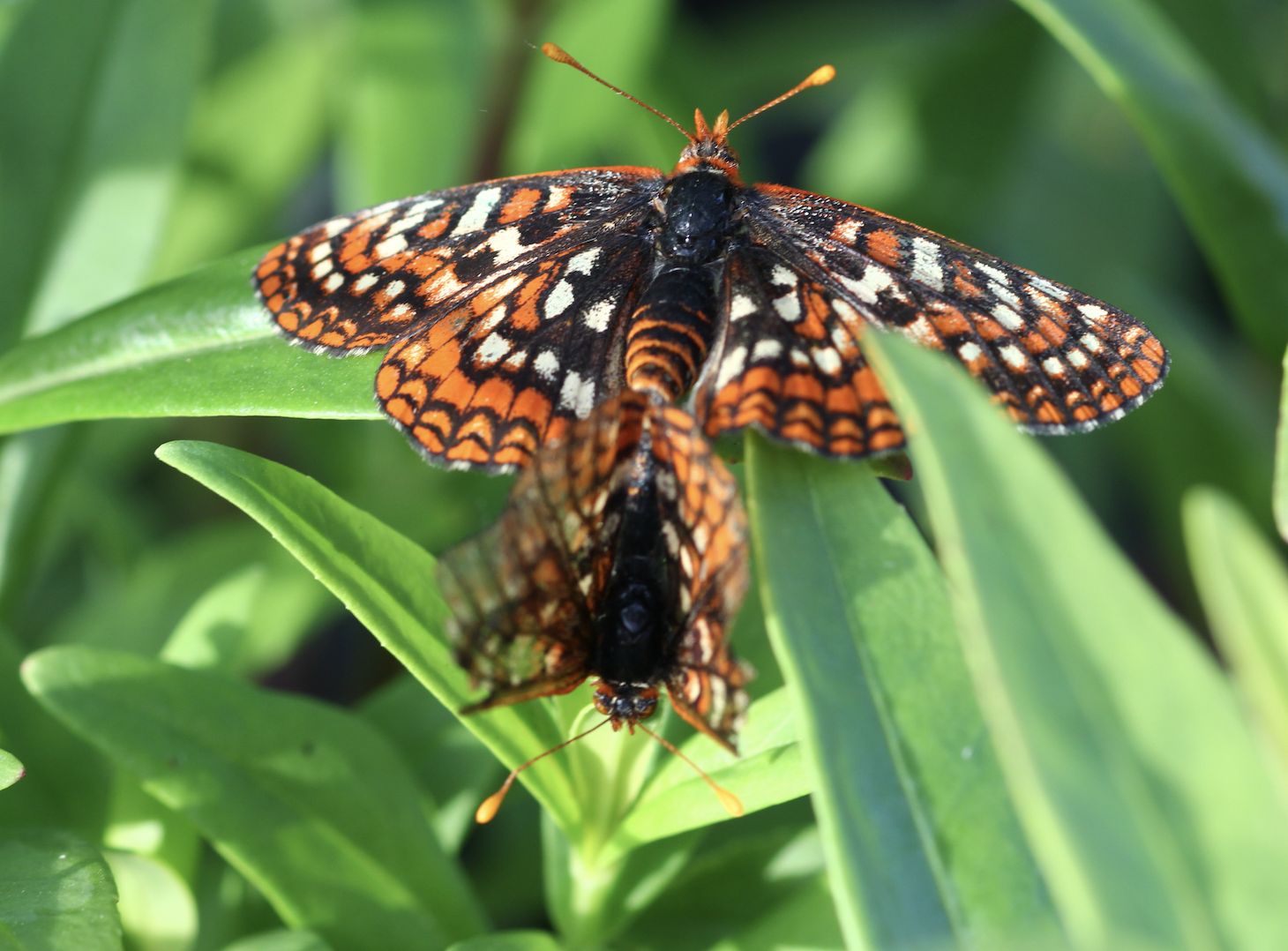
Eggs laid on Pedicularis risk being eaten by grazing mammals, which doesn’t seem like a climate-sensitive risk, but it is. The plants are grazed at night, and the butterflies at the Rabbit Meadow study site (where, oddly, there are bears but no rabbits) have avoided their eggs being accidentally consumed by evolving the habit of laying their eggs at the base of the louseworts. This is a dangerous place, for entirely another reason than their grazing. Heat radiating from the hot ground on sunny afternoons risks exposing the eggs to lethal temperatures. “In midsummer, it’s 23, 25C in the afternoon. But the ground gets up to 60C or more because the sun is so powerful and the ground is granitic sand. You can get burned just kneeling down on the ground.
“In 2010 we measured with a little thermocouple temperatures in “eggspaces”, the air spaces right next to eggs that were naturally laid. And we found that out of about 20 eggspaces, eight were at more than 40C on an afternoon when the temperature was 23, 24. We found one at 47.6. And in the lab, 48 kills them. So, what these butterflies were doing was, by avoiding the grazers, they had evolved the habit of really pushing themselves to the limits of their thermal tolerance.
“There’s a trade-off between protection from predators and protection from lethal heat. Eggs can either be completely protected from predators where it’s very hot or completely protected from the heat, but totally exposed to grazers. The response of the butterflies was actually to protect themselves pretty well against the predators and run up against the maximum heat that they could tolerate. When we began working at Rabbit Meadow in 1993 they were depositing their eggs a mere 5mm above the ground.”
It’s a gamble, one that paid off when the nocturnal grazers prowled the habitat. But there is a catch. As the climate warms more and more of the eggs laid low will be killed by heat, and the butterflies will face an evolutionary problem: whether to start laying eggs higher and reduce the risk of exposure to lethal heat at the cost of increasing the risk of predation by grazers? Singer and Parmesan will be measuring egg placement by the checkerspots at Rabbit Meadow in June this year and Singer will report their findings in his talk.
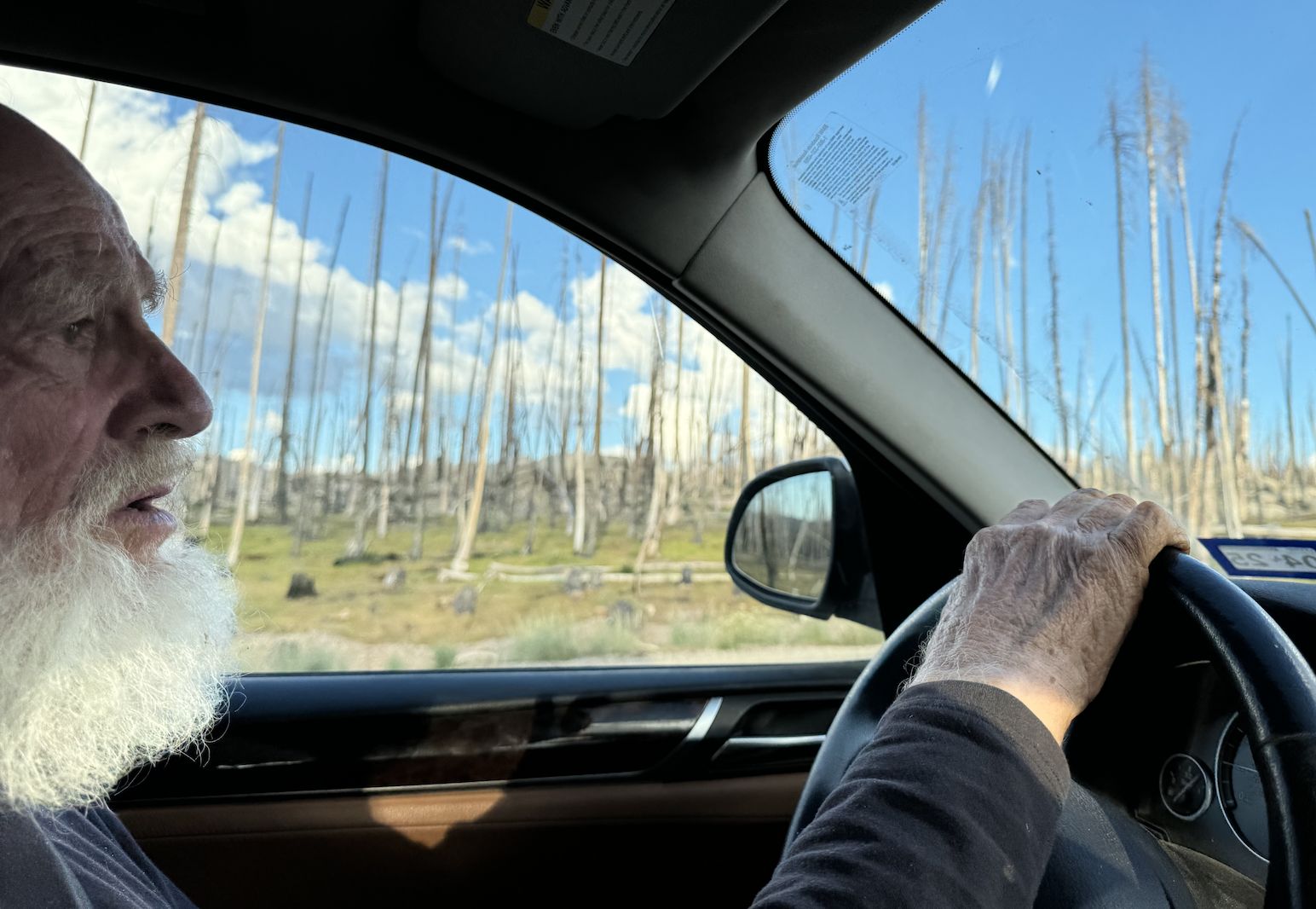
One can expect that egg placement might easily evolve by observing that it is already done very differently by Edith’s Checkerspots in populations adapted to Collinsia and to Pedicularis. Those adapted to Collinsia , land on a plant and taste it. If they like the taste, they’ll balance on a leaf, curl their tails under it and feel the underside of the leaf by pushing out the little ovipositor, the tube through which the eggs are laid. If the leaf feels good, the eggs are laid. The butterflies adapted to Pedicularis do the same, but with a simple extra behavioural step. They also land on a plant and taste it. But if it tastes good, before feeling for a place to put the eggs they first drop to the ground and look for the base of the plant to tuck their eggs into the base. And that’s how the eggs get to be laid low. It’s a very simple behavioural difference. After you taste something good, do you drop or not?” And the result is that eggs on Collinsia average 50mm above the ground, in contrast to those on Pedicularis that average only 5mm.
“We also know that differences among the butterflies in egg placement are inherited and not learned. Carolyn McBride made hybrids between populations of Edith’s Checkerspot adapted to the two hosts and found that the hybrids laid their eggs high: the behaviour of dropping close to the ground to lay eggs was recessive to the behaviour of balancing on host leaves and laying close to whether the insect had landed. A simple thing that Gregor Mendel would have liked, a couple of centuries ago.”
There are other “crisply clear different adaptations”, says Singer. “For example, butterflies adapted Collinsia would lay five eggs 10 times a day, and butterflies adapted to Pedicularis would lay 50 eggs once a day. So, a big clutch or a set of smaller ones. And astonishingly, the hybrids laid 25 eggs twice a day.
Back in 1996, Parmesan’s work on Edith’s Checkerspot rendered it the first species to be shown to be shifting its geographical range towards higher latitudes and elevations in apparent response to current climate change. However, because of this butterfly’s ability to evolve local adaptation to each habitat, the majority of populations seem to have available options to evolve in situ and adapt to changing climate. Some could do that by changing their diet, shifting from ephemeral annual plants like Collinsia to more persistent perennials like Pedicularis. For others the most obvious option is to reduce their size and shorten their life cycle, to better fit it into the reduced time available. And of course, some, like our study insects at Rabbit Meadow, have the option to cool their eggs by laying them a little higher. So, as the sun sets on another day in the rugged expanse of the Sierra Nevada, one thing is clear: so long as these butterflies take wing, there will always be hope for them in the wilderness.
 Professor Michael Singer will be addressing the Oppenheimer Research Conference which takes place in Midrand, Gauteng, from October 9th-11th, on the topic topic “Evolutionary responses to global changes: insights from 50-year studies of Edith’s checkerspot butterfly”.
Professor Michael Singer will be addressing the Oppenheimer Research Conference which takes place in Midrand, Gauteng, from October 9th-11th, on the topic topic “Evolutionary responses to global changes: insights from 50-year studies of Edith’s checkerspot butterfly”.
Author
- Tracking the Shangani Wanderer - June 18, 2025
- Rescue, rehabilitate, release: tracking the comeback of South Africa’s pangolins - June 18, 2025
- Fewer weavers, fewer homes: why nest builders matter in the Kalahari - June 17, 2025
Additional News
Pangolins are elusive and heavily trafficked. At Tswalu, researchers are working to uncover their secrets and aid conservation.
Declining Sparrow-Weavers may threaten other birds that rely on their old nests for shelter.



